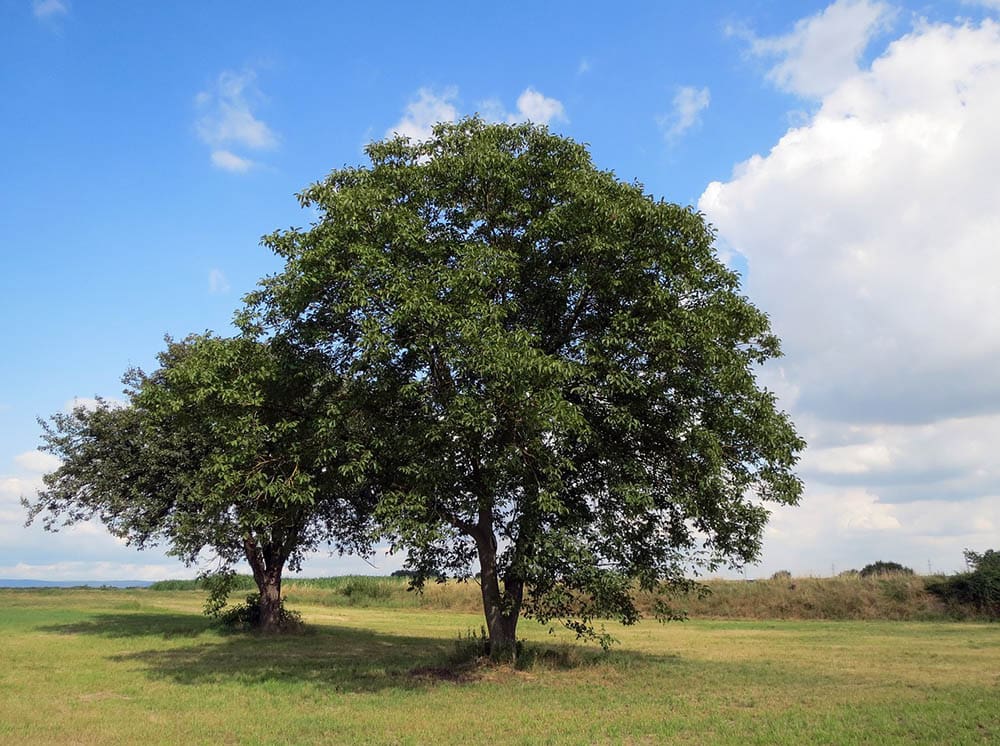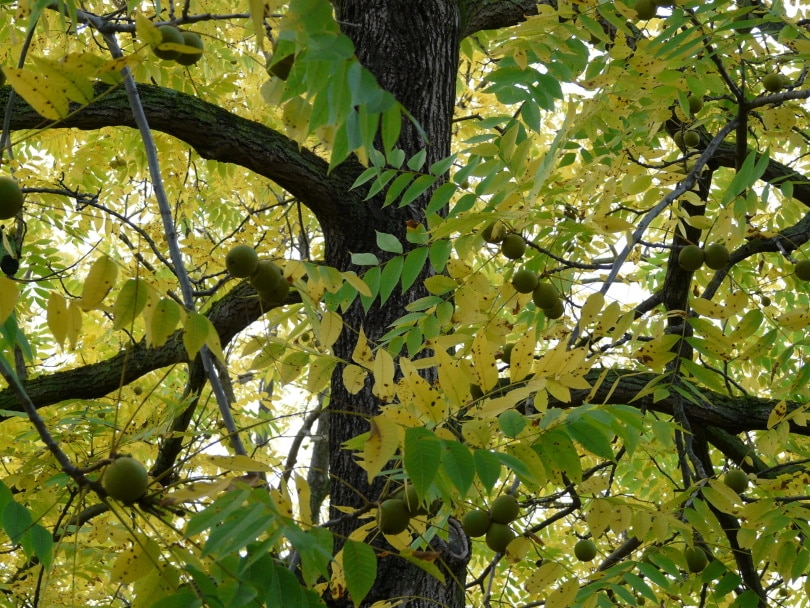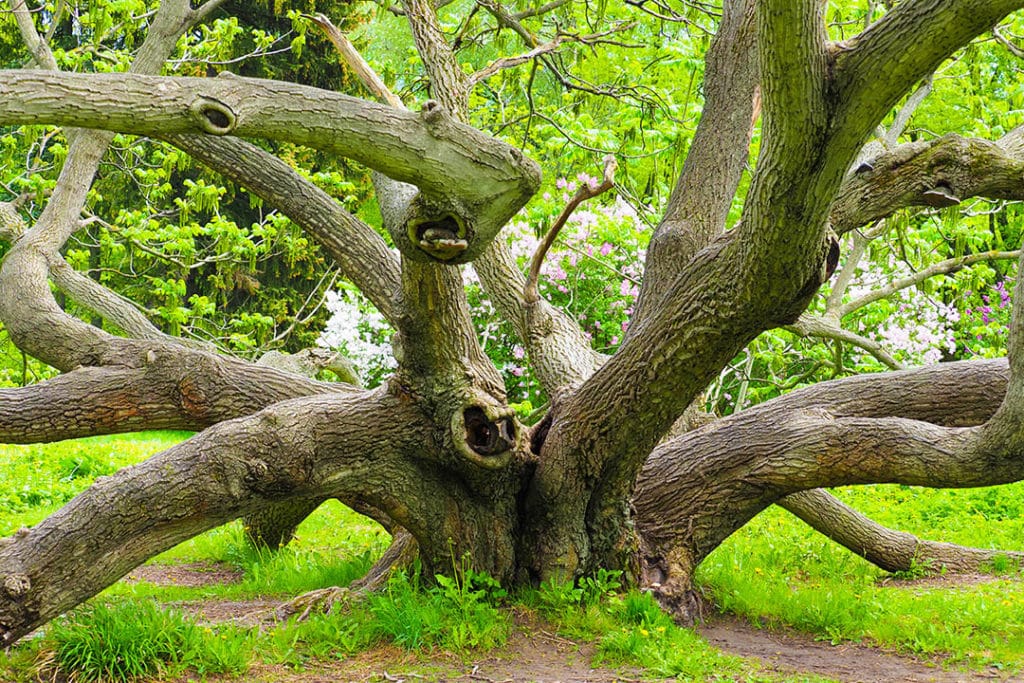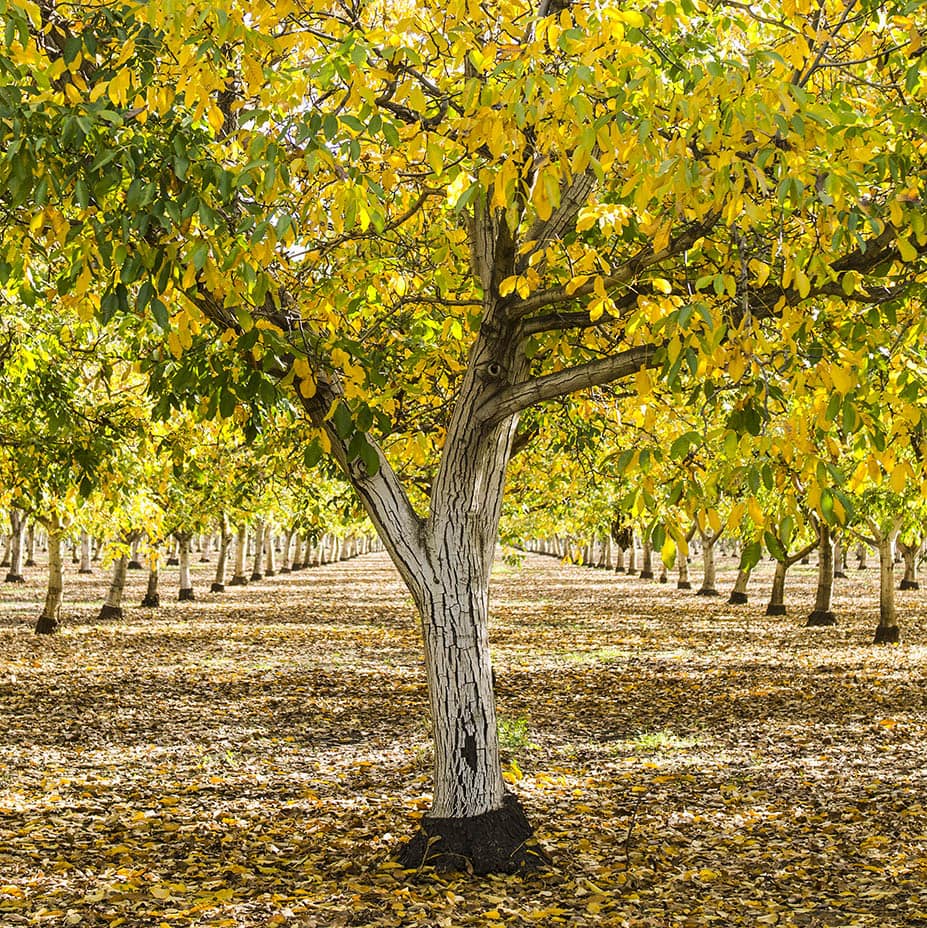Is Walnut a Hardwood? Pros, Cons, Types, & Characteristics
-

- Last updated:

Walnut is a widely popular hardwood with various purposes, and many woodworkers use it for their projects. It’s known for its durability and stunning rich brown color, which is why many people use it for flooring. Although it can be pricey, walnut wood is well worth the cost.
If you’d like to know more about walnut wood and the options for walnut flooring, check out the rest of our article below.
 The 6 Different Types of Walnut Wood
The 6 Different Types of Walnut Wood
There are different walnut wood types, although the most widespread species is Black Walnut. Other common types include English Walnut, Peruvian Walnut, Brazilian Walnut, and Claro Walnut.

1. Black Walnut
When most people say walnut, they’re referring to the Black Walnut that grows throughout the US. This walnut species is dense, heavy, and shock-resistant. It’s easy to work with, and it has widespread use in the USA and the rest of the world.
2. English Walnut
Typically referred to as European walnut, this walnut species is pretty similar to Black Walnut. The colors of this species are a bit paler than the American cousin, and this variety is more durable than Black Walnut.
3. Peruvian Walnut
Peruvian Walnut has excellent steam bending characteristics, a high crush strength, and low stiffness. Another great property of this species is shock resistance and the darker color compared to other walnut species.
4. Brazilian Walnut
Brazilian Walnut stands out due to its dark, rich color and an outstanding Janka Hardness Scale score of 3680. That makes this walnut species high in demand but also pretty pricey. It’s one of the strongest hardwoods in the world, and it’s considered a premium flooring option.
5. Claro Walnut
This species grows in Oregon and California, and people use it as rootstock for walnut orchards. Those trees grow with irregular grains, resulting in colorful, vibrant streaks near the graft.
Walnut Wood Characteristics
Walnut wood is an excellent option for various woodworking and wood carving projects, as it’s heavy, durable, and resistible to warping. The wood has medium density, with a Janka Hardness Scale score of 1010, although different species of walnut may vary on the scale.
Another great property of walnut wood is decay resistance, which is why many people choose it for their home projects. However, it is prone to insect attacks, so it’s better to use walnut for indoor designs.
Below are some of the key characteristics of walnut wood that will help you determine if it’s the right choice for your needs.

Color
Walnut heartwood can vary in color, from light pale-brown shades to dark-chocolate brown with dark streaks. The wood can have attractive purple, gold, green, and red hues. The sapwood can be creamy beige/grayish to completely white.
Grains and Texture
Walnut wood is typically straight-grained, although it can occasionally be irregular, wavy, or curly. The texture is pretty smooth, but it can sometimes be medium.

Workability
One of the reasons people love walnut wood is because it’s easy to work with both hand and machine tools. You won’t have any issues gluing, finishing, or treating the wood, which is incredibly convenient for beginner woodworkers and DIYers. The only minor downside is that walnut wood has a mild odor while you’re working on it.
Pricing
Walnut wood is considered a premium domestic hardwood, and therefore, the price of this wood is not very affordable. The cost of the lumber will be even higher if the grains are irregular or wavy, as that adds more value to the overall aesthetic appeal of the wood.

Uses
Due to the excellent properties of walnut wood, it has many usages, and some of the most common ones are:
- Flooring
- Furniture
- Cabinetry
- Interior paneling
- Trims
- Musical instruments
- Wood carvings
- Veneer
Benefits & Disadvantages of Walnut Wood
Like every other wood type, walnut wood has benefits and disadvantages that set it apart from different wood species. If you’ve been considering installing walnut floors, you need to be aware of all the pros and cons of this wood type, so check them out below.
- Attractive grains
- Durable
- Long-lasting
- Decay-resistant
- Stunning color
- Excellent workability
- Availability
- Heavy
- Expensive
- Can fade during sun exposure
Why Should I Choose Walnut Flooring?
Walnut hardwood has been among the most popular flooring options for decades. Many homeowners prefer this type of wood because it adds warmth to the space and makes the area more inviting. It’s also eco-friendly, and you’ll lead a more sustainable life with this flooring type.
The first thing that makes walnut flooring stand out is its appearance. Walnut wood has stunning colors and interesting grains and will be the focal point of any home. The brown tones with mesmerizing colorful hues will add aesthetic appeal to the area, making it feel more homey and comfortable while being elegant and classy.
However, you should be careful when selecting walnut flooring for rooms in your home, as they could make a small area feel even smaller since it has darker tones. Preferably, it’s best to install walnut flooring in larger spaces.
As this hardwood comes in various looks, you’ll be able to choose the option that fits in with your current home design. Another excellent thing about walnut hardwood is that even though it’s expensive, its price will increase the overall value of your home. If you ever decide to resell, your home will be worth much more than a standard laminate or other flooring option.
These floors are typically water, insect, and mold-resistant, so are an excellent choice for people who live in warm, humid areas. Compared to other flooring options, walnut flooring is easy to install, and anyone with basic tools and skills will be able to finish the installation job successfully and save some money.
Drawbacks of walnut flooring
Although walnut hardwood is an excellent flooring option, it does have certain drawbacks.
- Walnut flooring can be extremely expensive, although the price will vary depending on the walnut species. Typically, Black Walnut tends to be cheaper than Peruvian Walnut. The way to lower the costs would be to choose engineered walnut flooring.
- Although walnut wood has stunning color, it can fade over time, resulting in unattractive markings on your floor. It’s something to have in mind before installing them in your home.
- Walnut flooring may not be the best option for people with pets as it can be prone to scratches and markings.
- Heavy furniture could also damage walnut floors, so you’ll need cousin furniture pads that prevent scratching and denting.
How to Maintain Walnut Flooring
Walnut wood is durable, so as long as you maintain your walnut flooring properly, it will last for generations. As it’s pretty easy to maintain, you won’t have to worry about constant repairs, cleaning, or refinishing. Still, since this wood is softer than most hardwoods, you should be cautious as scratches and dents may appear.
We suggest avoiding walnut flooring in high-traffic areas such as your hallway, as the floor could suffer damage. It’s best to install these floors in bedrooms, family areas, and dining rooms. If you still decide to use walnut flooring in areas with a lot of traffic, think about using rugs and mats to lower the chances of damage.
To maintain your walnut flooring, you should sweep and dust the floor daily to prevent dirt and debris from collecting. Other than dusting, we suggest using a damp mop to clean the area gently. There’s no need for chemicals as they could penetrate the flooring.
Here are other beneficial tips for making your walnut flooring last longer:
- Air out your home frequently to allow the floors to dry out in fresh air but avoid direct contact with UV rays
- If you have pets, frequently trim their nails to avoid scratching
- Take off your shoes before entering an area with walnut floors
- Refinish the flooring every couple of years to maintain a fresh look
- Fix any minor scratches the moment you notice them
 Conclusion
Conclusion
Walnut flooring is charming and beautiful due to its stunning colors and warm honey tones. It has outstanding properties, although it’s not perfect. For the most part, the benefits outweigh the drawbacks, but you should still ensure that walnut is exactly what you are looking for. If you don’t mind taking care of the flooring, walnut will be an excellent option for your home.
- Related Read: 25 Different Types of Wood Flooring (With Pictures)
- “The Properties of Walnut”
- “Walnut Wood”
- “Woodworking: What To Know About Walnut Wood”
- “Why Is Walnut Hardwood Flooring So Popular?”
- “What Are Walnut Flooring Pros and Cons?”
- “Walnut Flooring Pros and Cons You Should Know”
- “Everything You Want to Know About Walnut Flooring”
- “The Benefits Of Walnut Wood Flooring”
Featured Image Credit: Silviu Carol, Shutterstock
Contents
 The 6 Different Types of Walnut Wood
The 6 Different Types of Walnut Wood